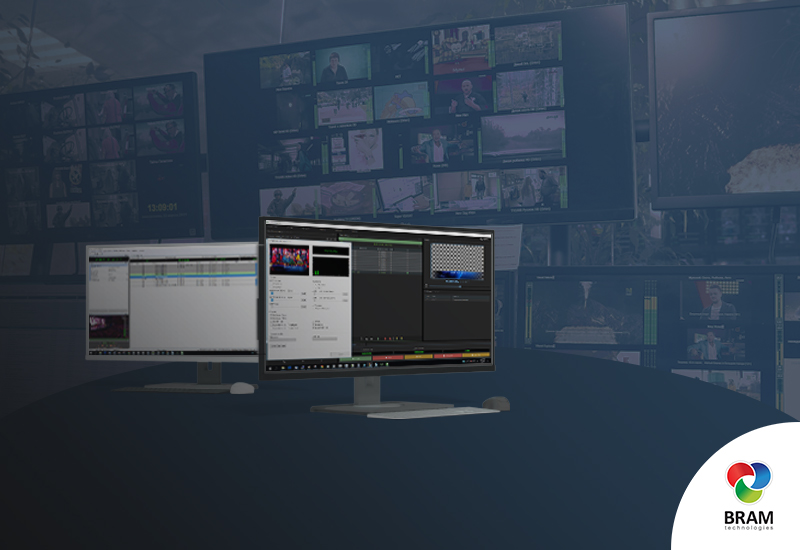One of our customers, a regional tv station, had particular requirements for flexibility when working with tickers – the ads and classifieds in the ticker bring in a major part of the channel’s revenue. They especially required the capability to swap out the ticker ads independently from the main automated playout, staying within a very moderate budget. The task was easily accomplished using an Azimuth videoserver, the AutoPlay automation system and TitleStation Mix manual graphics control.
The main AutoPlay Air playout allows adding graphics to clips in the playlists as secondary events, with automatic start within a configurable interval from the clips’ start or end. Air also provides frame-accurate video and graphics preview right there in the module’s interface, with no external rendering engines or plugins required.
The TitleStation Mix CG control module (“pilot”) can connect to the same videoserver channel that Air plays out from and apply additional graphics to it independently from the main on-air playlist.
It’s also possible for TitleStation Mix to play out independent graphics as Fill and Key from a separate videoserver channel, e.g. for further mixing on a video switcher.
All graphics objects can contain dynamically updating text fields and images. For this to work, the name of a layer in the graphics template must be identical to a text or image file name in a special folder on the videoserver. Taking a graphics element off-air or re-rendering it when dynamic content changes is not necessary.
For additional assurance a live videoserver output preview window is available in the AzAdmin tool.
On this project the ticker editor updates its content files and puts the ticker on air at the appropriate time using TitleStation Mix, confident that the main on-air operations (playing out video and graphics on other layers) cannot be disrupted by his/her actions in any way.
This sort of workflow makes the ticker editor’s work much easier and faster, decreases the number of errors – and does not require a broadcast engineer to be present in the control room. And doing all this from a single videoserver channel greatly reduces the solution cost.
